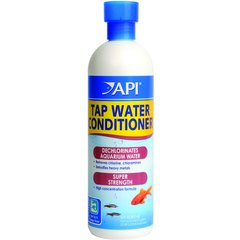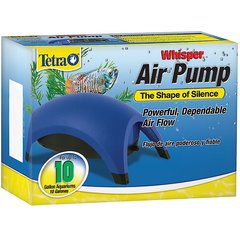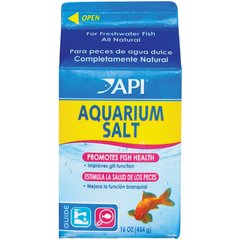The 7 Best Cleaner Shrimp for the Home Aquarium
PetMD Editorial
Cleaner Shrimp – Hard Working Crustaceans
By Jessie M Sanders, DVM, CertAqV
Planning and developing your tank environment by taking all biome contributors into consideration will make the healthiest home for your new pets, and the best home aquarium systems flourish through diversity.
One of the most overlooked components of healthy and diverse fish tanks are crustaceans; specifically, those in the cleaner shrimp family. Even though they may look like little space aliens, cleaner shrimp are a natural fit for many aquatic biomes; beneficial for both the inhabitants of the tank and for the human who has to clean the tank.
As their name suggests, cleaner shrimp clean their environment. They are hard-working crustaceans. But while that is an impressive trait by itself, that is not all they are known for. Even as they are picking debris and algae off the rocks, did you know that some types of cleaner shrimp will clean your fish as well?
Fortunately, it isn’t an altogether thankless job. In return for removing parasites and algae from your fish, the shrimp are rewarded with a tasty meal: yummy parasites that are packed with nutrition.
Related
Scarlet Skunk Cleaner Shrimp
Starting off the saltwater group is our true cleaner shrimp, the Scarlet Skunk Cleaner Shrimp (Lysmata amboinensis). Although they don’t smell like skunks, they have the same distinctive white line along their body. These dainty shrimp can grow rapidly when first introduced to a new saltwater tank. You will see the discarded “molts,” or old exoskeletons, that allow crustaceans to grow into their larger skeletons.
These shrimp will clean fish of ectoparasites and may even set up designated "cleaning stations," a sort of car wash for fish, where fish will go specifically to be cleaned. Keep in mind, however, that some fish species like to eat crunchy crustaceans, so you’ll want to identify and keep those fish in a separate tank.
The 7 Best Cleaner Shrimp for the Home Aquarium
 API Tap Water Conditioner, 16-fl oz bottleRated 4.8 out of 5 stars344Reviews$8.45Chewy Price
API Tap Water Conditioner, 16-fl oz bottleRated 4.8 out of 5 stars344Reviews$8.45Chewy Price Tetra Whisper Non-UL Air Pump for Aquariums, Size 010Rated 4.5 out of 5 stars316Reviews$6.40Chewy Price
Tetra Whisper Non-UL Air Pump for Aquariums, Size 010Rated 4.5 out of 5 stars316Reviews$6.40Chewy Price API Freshwater Aquarium Salt, 16-oz cartonRated 4.7 out of 5 stars210Reviews$5.28Chewy Price
API Freshwater Aquarium Salt, 16-oz cartonRated 4.7 out of 5 stars210Reviews$5.28Chewy Price Aqueon QuietFlow 10 Ammonia Reducing Specialty Filter Pad, 4 countRated 4.8 out of 5 stars100Reviews$6.79Chewy Price
Aqueon QuietFlow 10 Ammonia Reducing Specialty Filter Pad, 4 countRated 4.8 out of 5 stars100Reviews$6.79Chewy Price
Banded Cleaner Shrimp
The Banded Cleaner, or Coral, Shrimp (Stenopus hispidus) is easy to spot as it waves its long white antennae at the fish swimming by. This shrimp is most noted for its long, banded third pair of arms. It has been observed that this type of shrimp can actually recognize different shrimp individuals and distinguish between them. Due to this ability, it is recommended that you keep only one Coral Shrimp, or a mated pair.
Peppermint Shrimp
Peppermint Shrimp (Lysmata wurdemanni), also known as the Veined or Caribbean Cleaner Shrimp, is not a true cleaner shrimp. Rather than pick the parasites off fish, they would rather eat detritus or other convenient organic material floating around your tank. They have a reputation for managing the growth of unwelcome Aiptasia, common anemones that grow like weeds in some reef tanks, but this is not always the case; some will, while others do not.
Although they may not be the best choice for parasite control, they are very peaceful and are still good additions to any reef system. These shrimp have been captively bred and are relatively easy to find.
Ghost Shrimp and Grass Shrimp
On to the freshwater aquarium shrimp! Starting us off is the Ghost Shrimp (Paleomonetes sp.). These are very efficient aquarium cleaners who like to eat anything they can get their claws on and will do their best to help keep your aquarium clean.
Also known as Glass Shrimp, they may be hard to spot in a colorful aquarium due to their almost transparent appearance. Keep in mind that they do like to hide, so provide lots of good shrimp “caves” and house them with peaceful fish species that do not eat shrimp. The common Grass Shrimp (Palaemonetes paludosus) is included within this group of shrimp.
Red Crystal Shrimp
In vivid contrast to the transparent Ghost Shrimp is the freshwater Red Crystal Shrimp (Caridina sp.). They are sorted into grades based on the vividness of their red and white bands. Shrimp with very stark white bands tend to be more expensive. Those born without the red color mutation are known as Bee Shrimp. Instead of red and white bands, the Bee Shrimp have contrasting bands of white, black, and brown.
These shrimp are good additions to peaceful freshwater tanks and love to eat algae, detritus, and any food that floats their way. Keep in mind that this genus likes their water a little on the acidic side (6.0-7.6), so that will affect what fish species you choose to keep with them.
Red Cherry Shrimp
Lacking the distinctive bands of the Red Crystal Shrimp but retaining the same bright coloration is the Red Cherry Shrimp (Neocaridina denticulate sinensis). Be aware that these shrimp may be found without any of their red pigment and may even be completely clear, but once they have established themselves in your tank with lots of plants to hide in and a good supply of algae and detritus, they will take on their characteristic speckled red and white appearance.
Aquarium Shrimp Care: Water Treatments and Feeding Your Cleaner Shrimp
Cleaner shrimp are a great addition to any peaceful aquarium environment! These hard-working crustaceans will do a lot of your cleaning work for you and will allow you to enjoy your amazing underwater habitat to the fullest extent.
Crustacean care in many ways is very similar to caring for your aquarium fish. Good quality water is the most important thing a hobbyist can work on to keep all their tank inhabitants happy and healthy, and providing appropriate homes for all of your various fish and crustaceans will go a long way toward reducing stress and improving vibrancy. Invertebrates are very sensitive to copper-based water treatments. If any of your fish are prescribed with medication, always check the medications to make sure they will not harm your invertebrates before you add them to your aquarium.
Most crustaceans are hardy scavengers, but that is based on what is left after their tank mates have eaten. Make sure that they are able to get food if your fish are aggressive eaters. And with that in mind, there are some fish species that like munching on small shrimp, so they certainly should not be housed in the same tank with your cleaner shrimp.
And finally, a word of caution: You do not want your shrimp to be taken from the wild. Cleaner shrimp are bred in captivity by aquatic enthusiasts, so choose responsibly and check breeders’ sources when you are purchasing new shrimp for your aquarium.